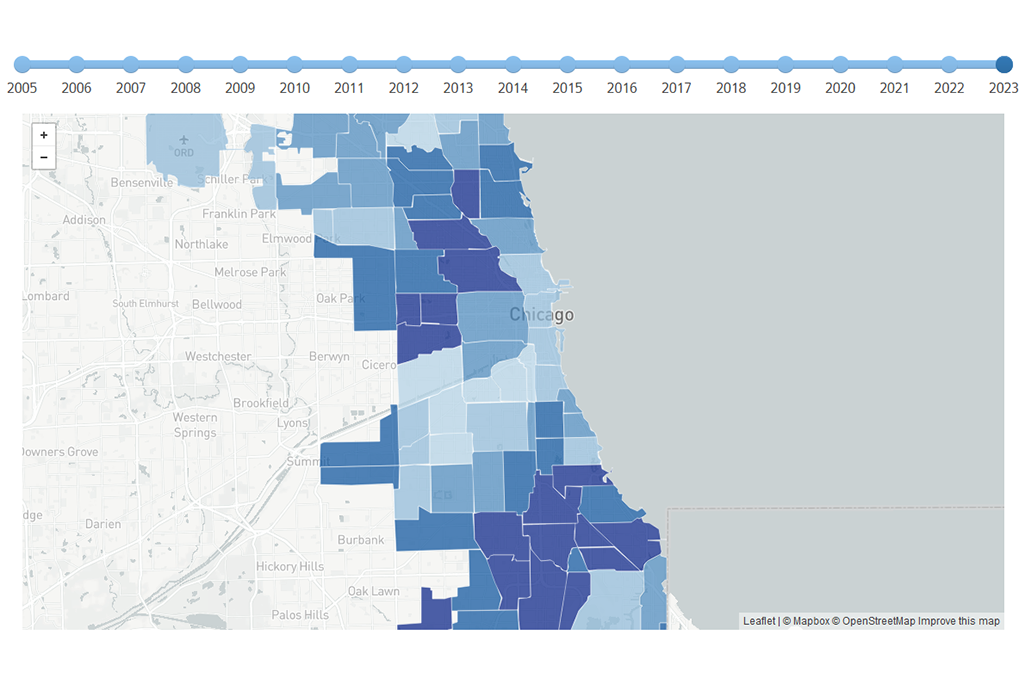On April 18, IHS brought together a diverse group of more than 40 housing stakeholders to DePaul’s Loop Campus to preview and discuss the findings of our 2013 State of Rental Housing in Cook County report. The event allowed us to collect insights on how our findings relate to the practical experience of attendees and to identify key questions raised by the findings that can inform future IHS work.
The report, available for download here, examines changes in the composition of the demand for and supply of rental housing in Cook County between 2007 and 2011 and explores how these dynamics have impacted access to affordable rental housing. Key findings include:
- The number of renter households increased substantially in Cook County during this time period
- Increases in renter households were largely driven by growth in the number of lower-income households earning less than 50 percent of area median income
- The supply of rental housing increased; this increase was largest for rental units in single family homes likely once intended for owner-occupancy
- While an increase in demand for rental housing was met by a corresponding increase in supply, it was not large enough or at the price points needed to meet the growing demand for rental housing affordable to lower-income households
The report found that the affordability gap, or the gap between the supply of and demand for affordable rental housing, grew significantly between 2007 and 2011 and was most acute in suburban Cook County. The analysis also found variation in these trends within 33 Cook County submarkets with regard to both the mix of renter and owner households and the increase in the size of the affordability gap within those submarkets. These variations corresponded to differences in the overall strength of these local housing markets.
The report’s findings resonated with attendees who represented a variety of stakeholder groups, including statewide housing agencies, financial institutions, affordable housing developers, community-based organizations, tenant advocacy groups, representatives from the City of Chicago and suburban Cook County governments, as well as representatives from other research and academic institutions.
Attendees discussed topics ranging from the various impacts of the changing dynamics of rental demand and supply to the most effective policy responses to the submarket variation identified in the report. Participants pointed to the fact that different submarket types and different populations within those submarkets would likely require different strategies to increase access to affordable rental housing. These discussions led to a number of key questions, including:
- What is the role that investor-buyers play in different segments of Cook County's housing market, and what are the ramifications of concentrated investor-owned single family rental properties on the long-term stability of local rental markets?
- How can the parcel-level data from the IHS Data Clearinghouse help policy makers determine the best strategies to increase the amount of affordable housing near transit in suburban Cook County?
- How are policy recommendations for addressing the growing affordability gap in suburban Cook County different if the growth in low-income renters is a short- or a long-term phenomenon?
Another much-discussed topic was the MacArthur Foundation’s recently released How Housing Matters Survey, which found that two-thirds of adults in the U.S. believe the focus of national housing policy should be split fairly so that it supports both renting and home ownership more equally. IHS partners expressed a desire to take advantage of attitude shifts in support of renting by implementing local policies that increase the supply of and access to rental housing in areas and among populations where support is strongest.
This discussion, as well as our continuing relationships with practitioners and partners, provided us with invaluable feedback on our current analysis and will serve as an important guide as we determine our research agenda for the future.
To be notified about new blog posts and to give us feedback, follow us on twitter, like us on Facebook, or join our LinkedIn Group.






